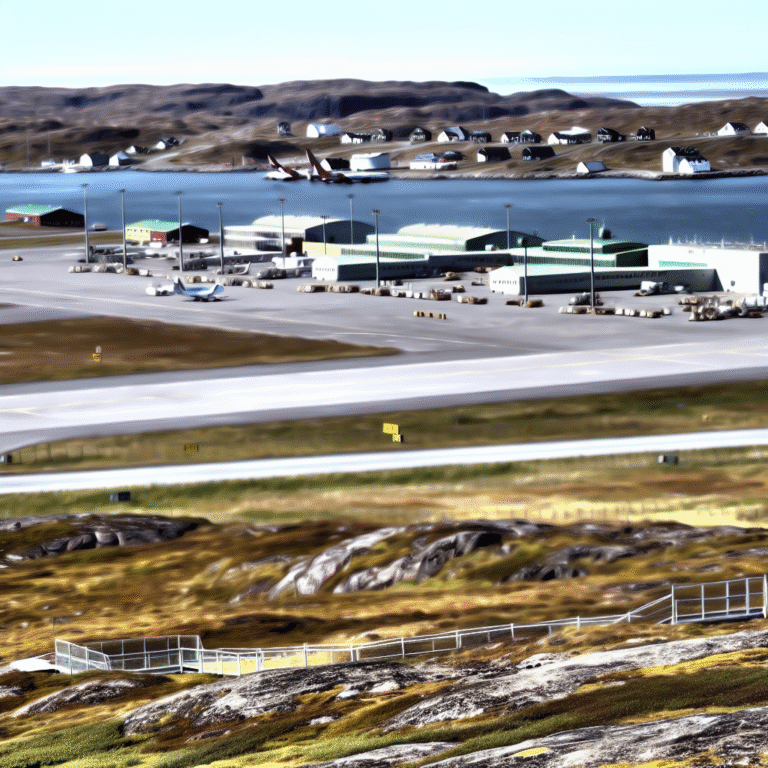New Restrictions for Nuuk Airport to Impact Passenger Travel
In September 2025, significant new restrictions were implemented regarding the scheduling of arrivals and departures at Nuuk Airport, a decision made by the Swedish Transport Agency, which oversees the facility. This change aims to ensure a necessary separation of air traffic, which will have serious repercussions for travelers over the coming months, as Air Greenland has indicated.
Passengers may now find themselves faced with unexpected overnight stays in Nuuk as domestic flight schedules are reshuffled to comply with these new regulations. This development has raised alarms among the airline and those reliant on its services, highlighting the challenges of traffic planning in the region.
Warnings Ignored
The situation, however, has not sprung up overnight. Reports clarify that Greenland Airports had been warned about potential complications at least a year prior to the decision. Yet, those warnings did not lead to any proactive measures.
To understand the background, one must look back to a meeting that took place on September 19, 2024, at Hotel Narsarsuaq. Here, six officials from the Swedish Transport Agency convened with Jens R. Lauridsen, the current managing director of Greenland Airports, and Henrik Estrup, who left his position in August 2025 due to concerns over commercial focus.
The agenda was focused on critical points that needed addressing before the anticipated opening of the new Atlantic airport in Nuuk, slated for November. One key discussion revolved around the choice between Air Traffic Control (ATC) and Flight Information Service (AFIS) for managing airspace in Nuuk—a choice that carries significant implications in today’s context.
The Swedish Transport Agency advocated for ATC, a method involving direct management by air traffic controllers, akin to that found in Kangerlussuaq. In contrast, Greenland Airports favored the less stringent AFIS, which operates similarly to other Greenlandic airports by providing information rather than direct instructions to pilots.
During the discussions, the Swedish authorities cautioned that without ATC, Greenland Airports would struggle to manage an anticipated growth in air traffic effectively. They stated that, based on expectations for the summer of 2025, either severe limitations on traffic would be necessary or the implementation of air traffic control.
The meeting notes were subsequently approved without objection from Greenland Airports, underscoring the seriousness of the challenges laid out.
Navigating Growth in Air Traffic
Despite the uncertainties, the projections for air traffic growth in Nuuk are significant. Following the successful opening of the new airport on November 28, they not only anticipated an increase in domestic operations but also welcomed more airlines, even after being warned in Narsarsuaq. By October 2024, both United Airlines and SAS announced they would be launching summer routes for 2025.
However, the growing complexity of traffic management became apparent following the Swedish Transport Agency’s latest inspection report from September 2025, which noted an unexpected rise in passenger volume and operational challenges. These realities provided the foundation for the current restrictions placed on air traffic.
Future Restrictions on the Horizon?
Hans Christian Stigaard, an aviation expert and former operations director at Copenhagen Airport, suggested that this may not be the end of the road regarding restrictions. After reviewing both the inspection report and the new regulations from the Swedish Transport Agency, he issued a warning. Stigaard noted that if conditions did not improve quickly, even stricter measures—potentially including the complete shutdown of the airport—could be on the table.
Given that Jens R. Lauridsen was made fully aware of these issues in Narsarsuaq, questions are abundant regarding why proactive measures were not taken to install the required air traffic control.
In response to increasing scrutiny, Greenland Airports’ communications manager, Mikkel Bjarnø Lund, provided a statement indicating that they’ve maintained a “close and constructive dialogue” with the Danish Transport Agency regarding air traffic systems. He emphasized the complexity of the situation while maintaining that the AFIS model used in Nuuk—endorsed by authorities—had represented a tested approach demonstrated in other regions, such as the Faroe Islands.
Lund pointed to challenges in optimal functioning due to procedures not being fully implemented, an uptick in traffic, and some airlines’ unfamiliarity with operating in uncontrolled airspace. However, his statement sidestepped the pivotal question of why the critical warnings received back in Narsarsuaq went unaddressed.
As the situation unfolds, Lund assured that Greenland Airports is actively exploring potential solutions for the future operation of Nuuk Airport, including plans for integrating air traffic control. As discussions continue with the Danish Transport Agency, updates will be provided as they develop.
In the coming weeks, all eyes will be on Nuuk Airport as stakeholders work to navigate these turbulent changes in air traffic management.
